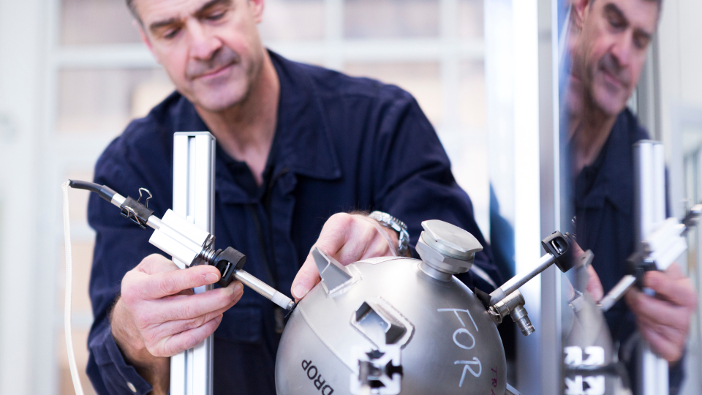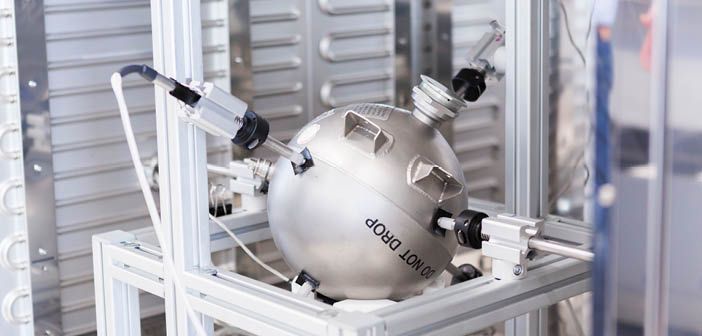Lufthansa Technik has updated how it maintains aircraft fire extinguishers at its component shop in Hamburg, Germany. The company says the new process cuts turnaround times and reduces environmental risks.
A test facility for this work was dedicated recently and put into regular service. The job of inspecting the fire extinguisher container no longer involves purging the ozone-depleting halon from the container (pressure bottle), temporarily storing it and externally processing it for reuse.
Aircraft fire extinguishing systems’ pressure bottles are usually ball-shaped metal containers with a diameter between 10-40cm (4-16in). Their structural integrity and functionality must be checked regularly. They are traditionally emptied and inspected in a water bath using hydrostatic testing methods. As part of the work, the attachment parts on the container are removed and then welded back into place. The inspection also involves the purging of halon, an ozone-depleting chemical that Lufthansa Technik says is still used in aviation for this special purpose due to safety reasons and the lack of alternatives. The halon is then temporarily stored in containers at the Hamburg base. Authorised service providers then clean and certify it before it is refilled in the bottles. Lufthansa Technik says that each step in the process – purging the fire extinguishing agent, temporarily storing it and transporting it – poses a potential risk to the environment.

The new process enables the fire extinguishing agent to remain in the pressure bottle throughout the entire inspection. The filled pressure tank is placed into a special jig and heated in a chamber. The pressure in the container rises, and the stress in its metal housing increases. This results in tension in the material, triggering sound waves. Special sensors – attached to the exterior of the container before the heating process – pick up these sound waves. Similar to the system used to localise earthquakes in the crust of the Earth, the position of every sound source can now be calculated with the help of differences in travel times and conclusions drawn about possible damage to the pressure tank. These findings are promptly displayed in a 3D model on a monitor, exactly localised and colour coded on the basis of certain criteria. This enables a decision to be made regarding the continued use or disposal of the pressure tank.
“The sensors being used are so sensitive that we can detect and localise very small events in the material structure,” said Anna Balka, head of the innovation project through which the new process was developed – Extreme Fast Fire Extinguisher Check and Test (EFFECT). “Even though the inspection of the pressure bottles is much more sensitive, a complete test takes no more than 90 minutes. The maintenance work can now be completed much faster and more economically and environmentally consciously than with conventional processes, because many other process steps are no longer necessary.”
Images: Lufthansa Technik





